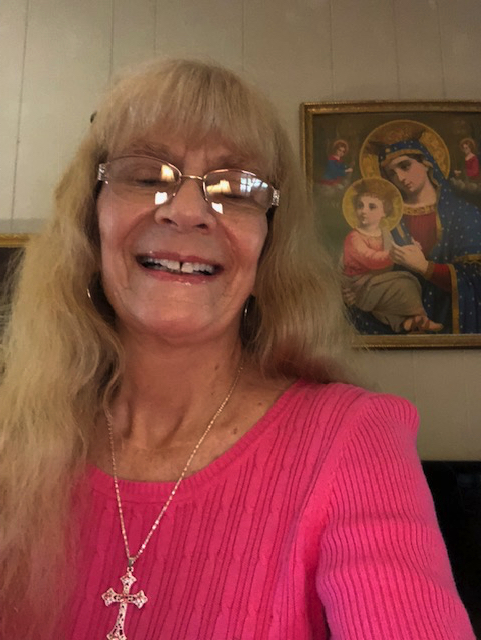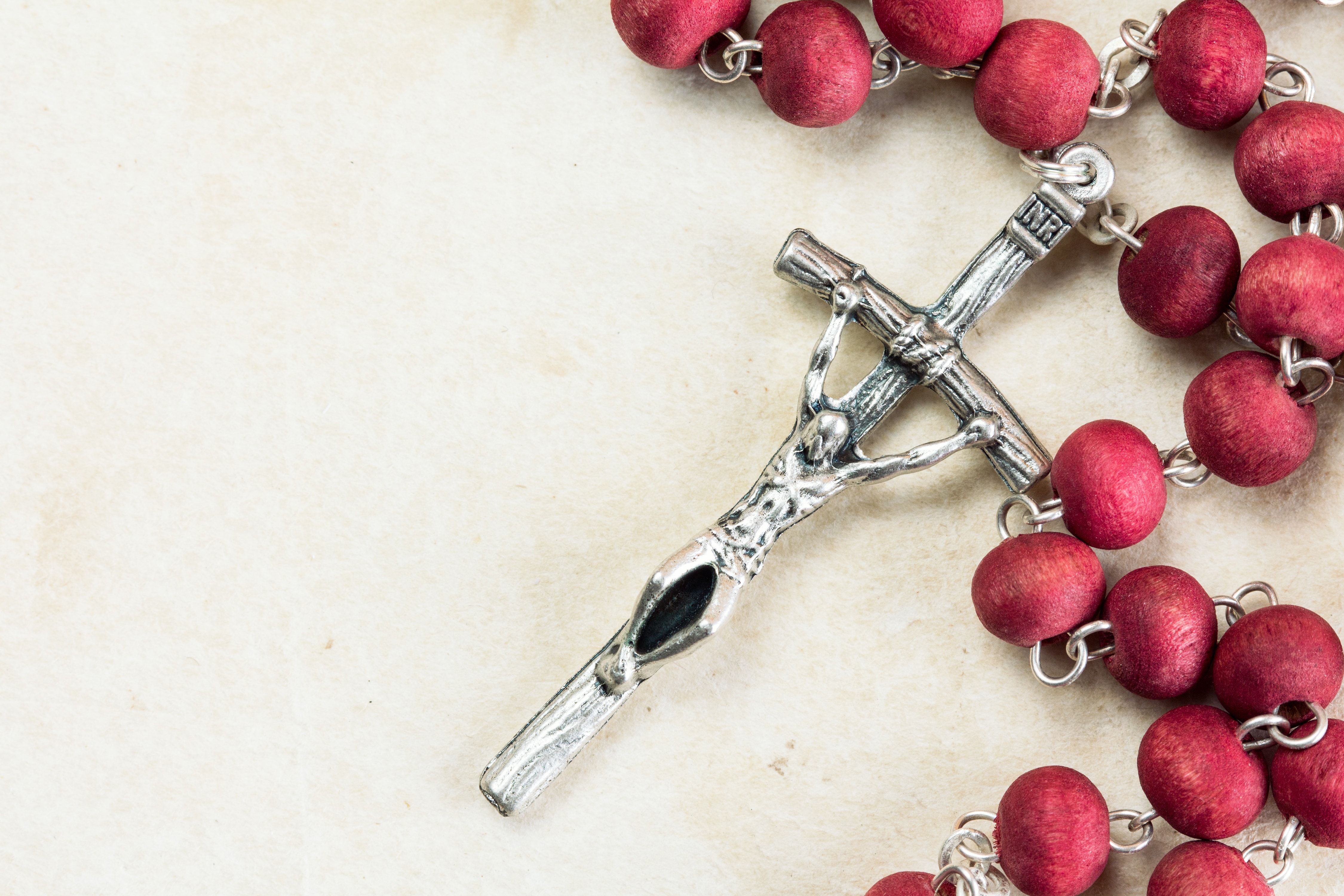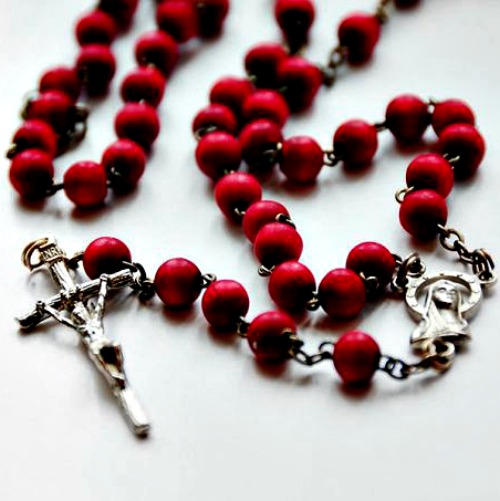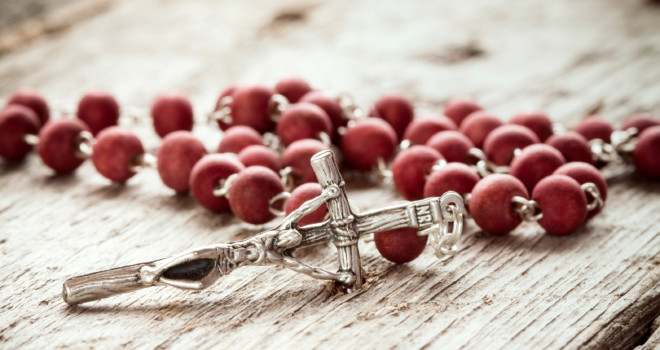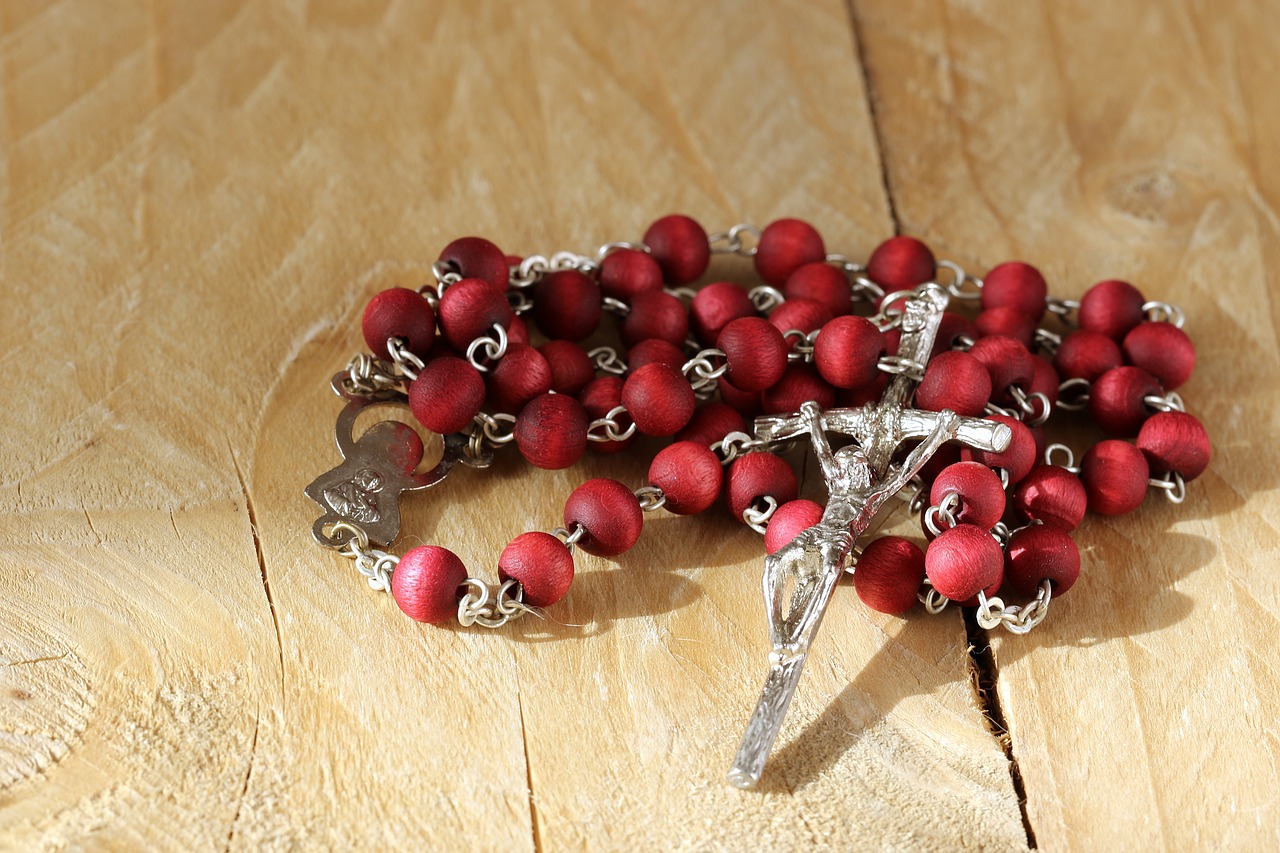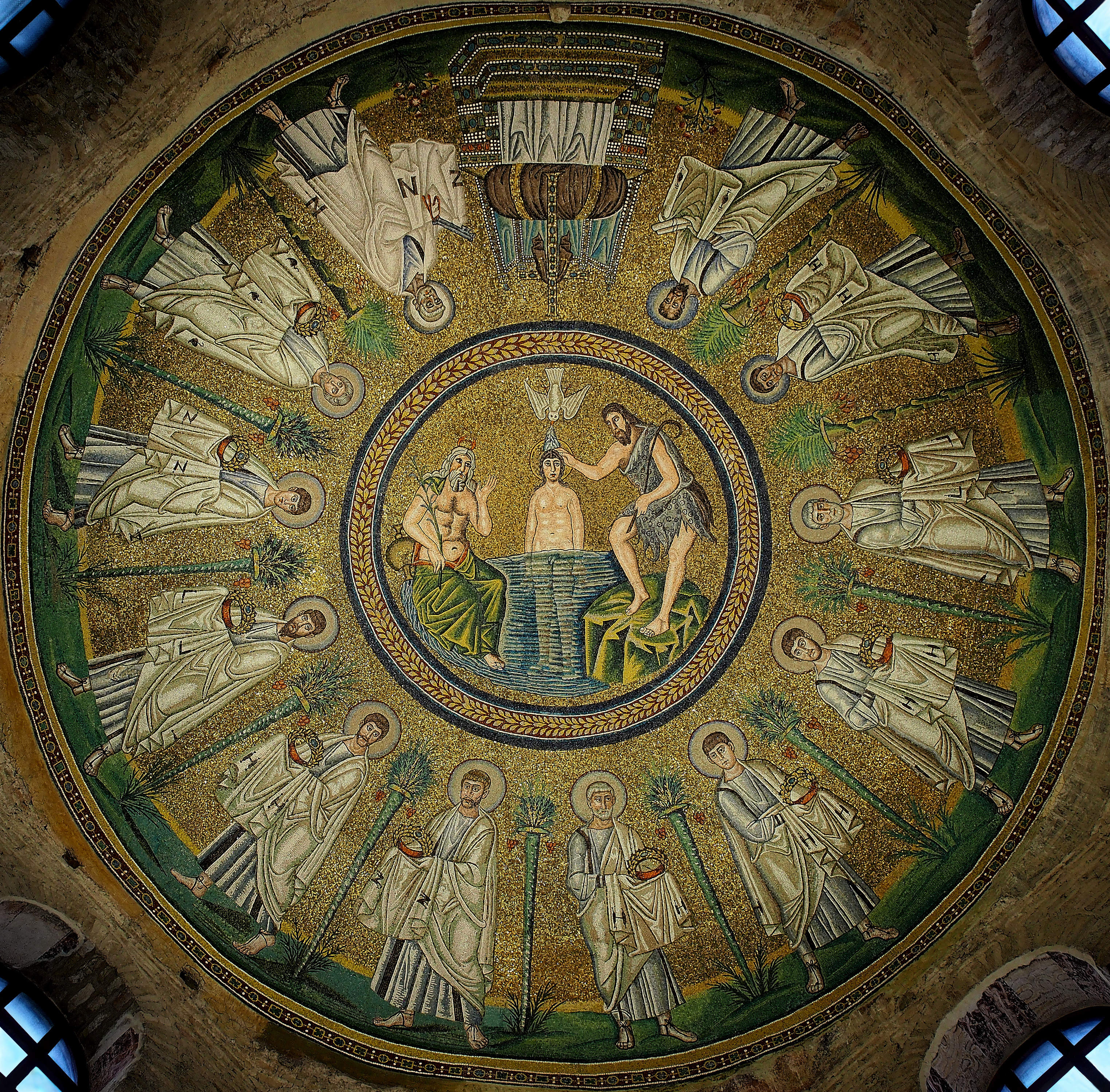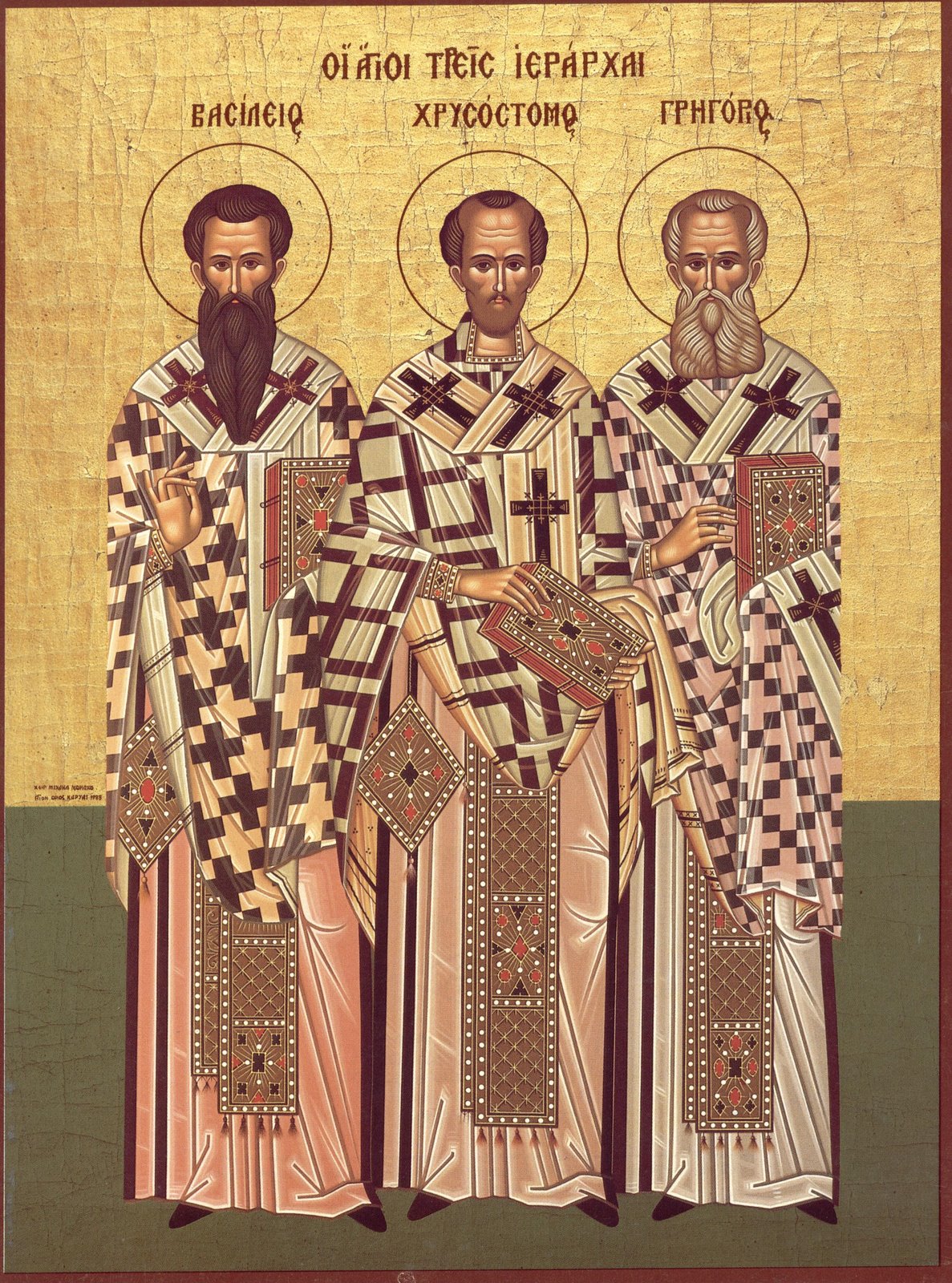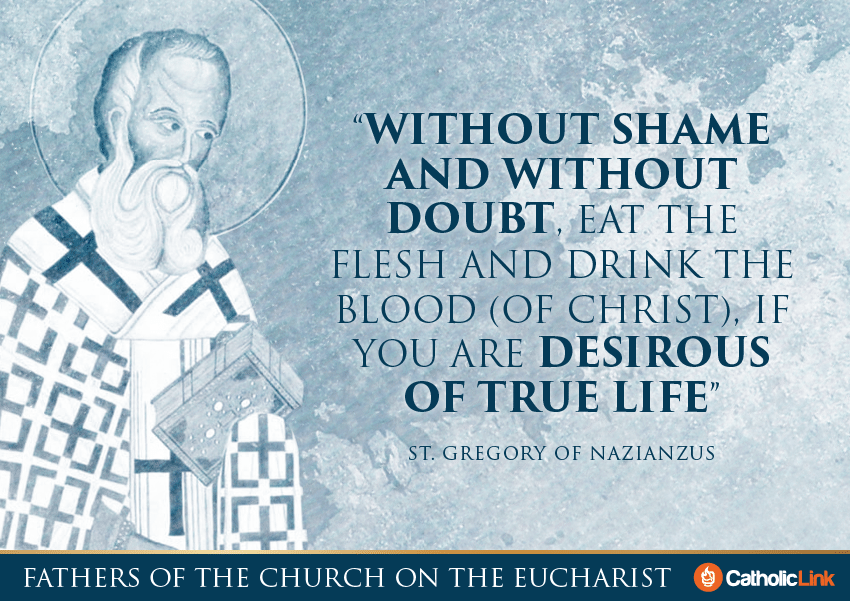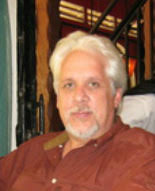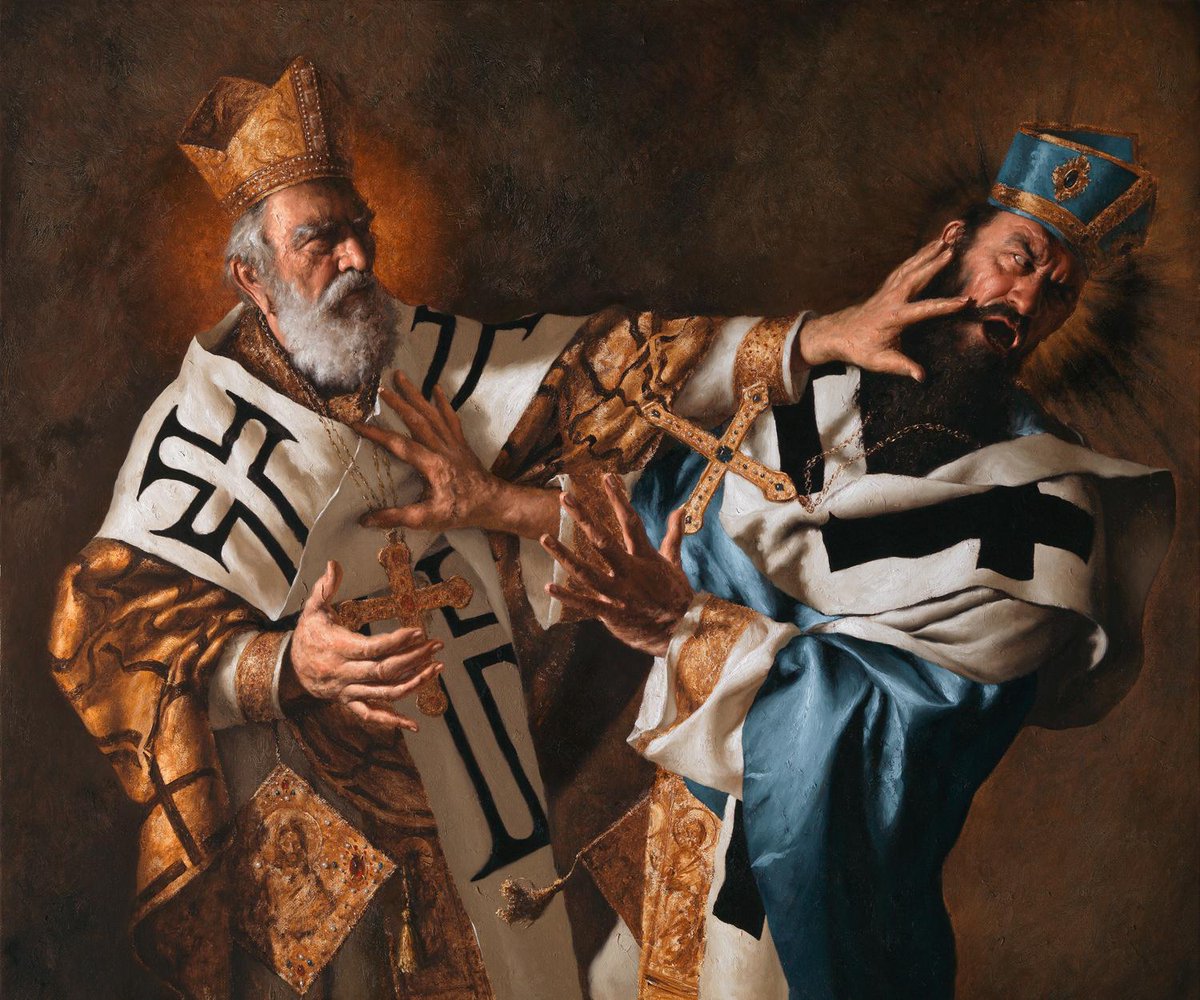
-St Nicholas, yes, THE Santa Claus, smacks Arius at the Council of Nicea, 325 AD. Unable to restrain his dispute with Arius, Nicholas approached Arius and slapped – or punched – him in the face. The bishop’s loss of cool shocked his contemporaries. For more detail, please click on the image.
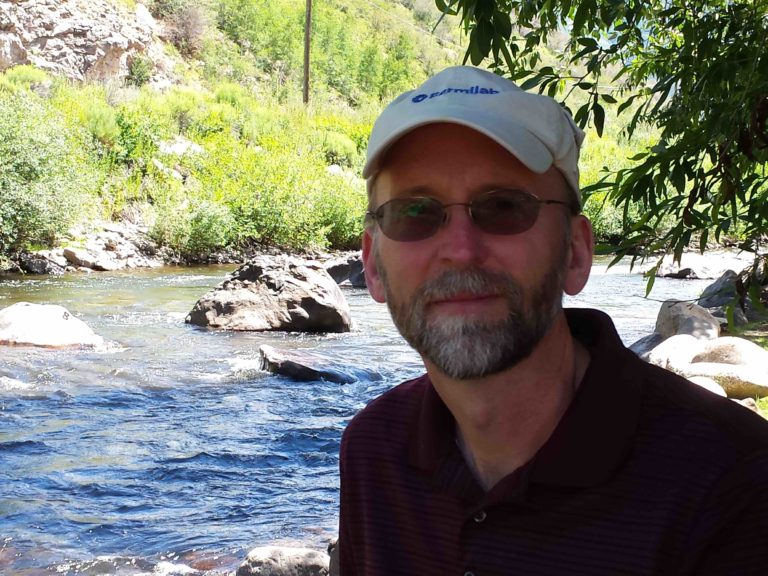
-by Mike Knapp (Mike Knapp was born in Chicago and raised on a farm in Garden Prairie, IL. He went to National Louis University to collect all their degrees finishing a doctorate in “Science and Spirituality in Public Education.” A National Board Certified middle school science teacher, he’s ending 35 years of teaching at the end of the 2018/2019 school year to start a new chapter with his wife — yet to be determined, as becoming a Catholic has really changed everything. An “elder/pastor” for over 20 years with the Bible Students he was received into the Universal Church in 2017. He’s serving as an altar boy at the Latin Mass, runs, reads, teaches graduate courses in environmental science for SCARCE and a course in particle physics for teachers at Fermilab, and goes to Feed My Starving Children regularly.)
“I was influenced by C.S. Lewis and Mere Christianity as a young Christian and always wished I could go to the closest church to where I lived, as he recommended. As I was researching the matter, I realized that, as for many others, a Catholic parish was actually the closest church to me.
This Catholic business was all very hard on my wife, Linda. Like me, she was the offspring of an elder/pastor in the Bible Students movement, and she had been an elder’s wife for over 20 years. We went to the Antiochian Orthodox church a few times, but Linda got migraines from all the incense and had difficulty with the focus on Mary. Their doctrine of communion with the saints in the Church Triumphant is hard for Protestants to accept. Protestants understand communion with the Church Militant, but not with the Church Triumphant.
I was praying in a Catholic church each morning, longing to be with Christ the way those who communed could. However, I knew that I couldn’t receive Communion in the Orthodox Church or the Catholic Church unless I converted. I found that hard. Looking back, I can see the sin of pride in myself. Since I had studied, I thought I should be an exception; I knew more than many who were participating in Communion. But now, I see the wisdom of the Church in her unwillingness to compromise on important principles.
As a substitute, I found an Anglican church (Anglican Church in North America, a “continuing Anglican” denomination) to attend on Saturday mornings and Sunday evenings, because they let me partake of their communion, which is the “thing” that originally got me going down this path. But what was the Eucharist there? The opinion varied even between their priests.
The canon at the church where I attended had Saturday morning prayer with the Eucharist and Sunday evening prayer with the Eucharist. After the Saturday morning Eucharist, he led a men’s Bible study, while his wife led a women’s group. I explained to him that I was an ex-Arian (non-Trinitarian) pastor on a journey, and he welcomed me. So, there was a period of time while I was still pastoring at my old church and also participating in the Anglican worship and communion on Saturday mornings and Sunday evenings.
In December of 2014, I resigned as elder/pastor of my church. Leaving my life, friends, theology, and just about everything else, was hard. At least I had a job. I marvel at those who leave a pastorate that then have to figure out how to put food on the table and a roof overhead!
My wife eventually came to the Anglican Sunday evening service with me. After we left the Bible Students, we attended there on Sunday mornings as well. She really loved the modern worship they blend into their liturgy. She has come to appreciate liturgy, the belief in the Real Presence, and other Catholic teachings there, but has not become Catholic. Still, she has been supportive and continues to grow in her faith. It pains both of us not to worship together, so I, as a Catholic, accompany her to the Sunday evening prayer at her Anglican church.
How could an Anglican canon help me over my prejudice against Catholicism? I learned much at his Saturday morning men’s Bible study. He was always quoting the Church Fathers and treated Catholic teaching kindly. He would point out those Catholic doctrines that he didn’t hold, but knew the Catholic Catechism and Church teachings better than most of the Catholics I’ve met. He is still a friend, and I do enjoy his sermons on Sunday night. What I like about his sermons is that he keeps to the readings for the day. He does not preach whatever he wants, but what his church has given in the readings.
I studied my way into the Church. I told one of the other pastors at my old church, “Whatever you do, don’t read Ignatius’ letters to the churches. They will ruin you.” Ignatius of Antioch laid waste my former view of Church history. Here is a man discipled by the Apostle John. He was the third bishop of that important see of Antioch, where there are bishops, priests, deacons, Eucharist, the importance of being obedient to your bishop, and so forth!
Additionally, reading Athanasius of Alexandria and his simple point on the Father and the Son being eternal (one can’t be the unchanging, everlasting Father without a Son!) helped me overcome my Arian beliefs. As I read the works of people who knew the Apostles and the first disciples, I realized there was no Great Apostasy in the early Church, except amongst those sects that kept popping up, trying to change what had been handed down.
I realized there were only two places I could truly have the Body, Blood, Soul, and Divinity of Jesus Christ (the divinity part being a big deal for an ex-Arian): the Orthodox and Catholic Churches. But through all my studies and experiences, I had to admit there could only be one universal Church, one I could find everywhere, one still united with a Tradition that, though a mighty oak tree today, still retains the image of the acorn of the early Church.
While attending an Anglican church, I found some online recordings of an RCIA (Rite of Christian Initiation for Adults) class. Going to the Catholic parish to pray had grown into a daily habit. I couldn’t stay for the whole Mass, but I could do so at least through the Liturgy of the Word. I wished that I could go up for Communion on my days off, when I could stay for the entire liturgy; what was there before me was the real thing. So close, yet so far.
I started listening to these recordings of RCIA sessions. My wife was puzzled by my listening to “Catholic stuff.” It was interesting, though, because the person teaching it had gone to Wheaton College (home of Billy Graham) and had converted to Catholicism when he started looking into Church history. He even spent time at the same Anglican church in Wheaton where we were. Linda and I went through RCIA together under him. Linda kept asking, “Where does the Bible say that?” and other, tougher questions about what was taught. RCIA could use some work in this area. Perhaps we could go back to Cyril of Jerusalem and his Catechetical Lectures? Of course, in our age, this is probably easier said than done.
On tough days at school, I would also stop by the church after work to pray. There was a side chapel where you could see the Tabernacle and get into the church when the main entrance was closed. One time, I noticed a man praying there, Craig, whom I had seen at morning Mass. He always seemed serene — which I wasn’t. I now know that what I did was breaking protocol, but I turned to him and started asking him questions about the statues, etc. He answered patiently. The next week, while at morning prayer, he came to me with a Daily Roman Missal and a copy of Introduction to Catholicism for Adults by the Rev. James Socias. Craig told me, “You have some studying to do.” We developed a relationship. I was always off to the races, and he was always telling me to take some time and develop a “Catholic mind.” After becoming Catholic, I’m starting to see what he meant. Craig was my sponsor when I entered the Church.
I have dealt with Peter and Popes, Mary, and all the usual Protestant issues, and am still adjusting. Stephen Ray, Scott Hahn, Brant Pitre, Mike Aquilina, and Fr. Simon of Father Simon Says on Relevant Radio have been part of my tutelage. I still try to listen to Fr. Simon’s podcasts daily. I also go to his Patristic Palooza on the early Church each October. Another author very important to me is G.K. Chesterton. (Where were you all my life G.K.?) His wit, joy and formidable intelligence are amazing. I tell people about him all the time, saying he’s the most important author of the 20th century that you’ve never heard of.
One of the scariest realizations I came to in this journey was that if the Church doesn’t exist (as, for instance, in the Catholic Church), then Jesus failed, because He wanted us to be one, not 30,000 or 40,000 flavors (John 17). I know Jesus can’t fail. That means there has to be a Church that still is one, despite all its various languages and cultures. No other body comes close to the Catholic Church in this. In fact, I am frequently amazed at the different people who make up a congregation. In my Protestant life, they would have divided into different churches. Sadly, some of the practices being proposed by leaders within the Catholic Church today have already been tried and discarded by Protestants. As the man told King Arthur and his knights in Monty Python’s Search for the Holy Grail, “Look at the bones!”
Some new acquaintances recommended the Coming Home Network. I contacted them, and Jim Anderson has been checking in on me throughout the process of my entering the Church in March of 2017 and following up since then. Just knowing there was someone who cared about me helped a lot. It was also good to read other people’s stories and realize that I was not alone in my quest. It was comforting to realize how many people who were leaders in their Protestant churches were willing to come over to the Catholic Church. With the challenges facing the Church these days, I have found that those of us who have made this journey of faith have little patience for the protestantization of the Church. Interesting timing on God’s part!
Being Catholic has meant a much more personal relationship with God. When I was confirmed (I was baptized as a child), I took the name of Elijah, my favorite prophet. We need Elijah and all the saints to help us in these times. As I wandered through those years of searching, I stumbled on the Liturgy of the Hours and daily use the Universalis app (which provides the daily texts of the Liturgy of the Hours and the Mass). I am ashamed to admit that I pray more now than when I was a pastor. Where I pray does matter. How I worship does matter. What matters is not what I want in prayer or worship, but what God wants. I think of Him constantly now. The Jesus Prayer of the Eastern Christians became a saving grace early in this transformation and is still a regular prayer throughout my days. I’m learning the Rosary, the Divine Mercy Chaplet, and other distinctively Catholic prayers. I feel blessed to have ancient aspects of my faith from East and West, as well as a deep love of Scripture from my Bible Student formation. I am blessed to be able to physically be with our Lord daily.
I am blessed, too, with having Catholic parishes in abundance around me. I have spent a day in prayer at St. John Cantius in Chicago, one of the most beautiful churches in the states. Last season, I was able to attend there for the entire Triduum (Thursday, Friday and Saturday of the week that precedes Easter Sunday); it was amazing, as are the parishioners there in their devotion. On Sundays, I am blessed with a parish nearby that celebrates an Extraordinary Form Mass (the old Latin Mass) as one of its five Sunday Masses.
I’m also part of a band of men who meet Saturday mornings at 7 AM to go over the Sunday Mass readings together. In addition, I’m a part of a smaller group of men who meet twice a month to study papal encyclical letters. We have just finished Casti Connubii (On Christian Marriage, by Pope Pius XI) and are now learning Humanae Vitae (On Human Life, by Pope Paul VI). After that we will tackle Pascendi Dominici Gregis (On the Doctrines of the Modernists, by Pope Pius X). Each of these encyclical letters deals with key issues of our contemporary society and culture. We also study spiritual disciplines and the Sacraments.
Our hope is to be a help to others as we deal with the ongoing dismantling of Western culture and belief in the sacred and supernatural. The fight is not between liberal and conservative, but between those who believe in God and those who don’t. The collapse of civilization is always quite inconvenient. The Church was there when it happened before, a couple of times. Here’s to her success once again!”
Love,
Matthew
